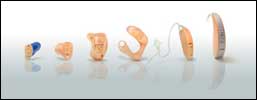German company Binauric has developed OpenEars earphones, which more closely replicate the nuanced binaural sound that human ears naturally capture—reportedly offering a huge improvement on the tinny sounds delivered through many earbuds. According to a May 27, 2015 article in Wired Magazine, Binauric found that most audio we listen to is recorded with a single microphone, which runs counter to the 3-dimensional way we hear through two ears. Wired reports that Binauric has developed a way to record and listen to sound that utilizes 3D audio, reproducing a more natural surround sound via the company’s OpenEars earphones.
Binauric’s OpenEars, which are funded in part via the crowd-funding website KickStarter, are Bluetooth in-ear headphones that “allow you to record your true audio impressions together with your video or photo and share them in an exciting and awe-inspiring acoustic quality.”
In her Wired article, author Liz Stinson points out that while smartphone camera technology has greatly advanced, smartphone microphone technology has lagged behind. The OpenEars earphones have advanced smartphone audio by recording and playing it back as binaural sound captured from two microphones. The earphone developers figured out how to record sound waves in a way that is closer to how the human ear hears them.
“We just copied our ears and put it in a technology,” said Tanja Schauer, a co-founder of Binauric.
The company has miniaturized the binaural recording technology for headphones, and says the audio can be turned into formats like WAV and MP3 or streamed through an app. The headphones have “hear through,” according to Binauric, which allows the user to set, via an app, how much of the outside world you want to hear through your headphones.
For more details on the design and functional features of OpenEars, read the original article in Wired Magazine, or visit the OpenEars page on the KickStarter website or the Binauric website.
Source: Wired Magazine, KickStarter, Binauric
Photo credits: Kickstarter, Binauric







At least 10 year old technology.